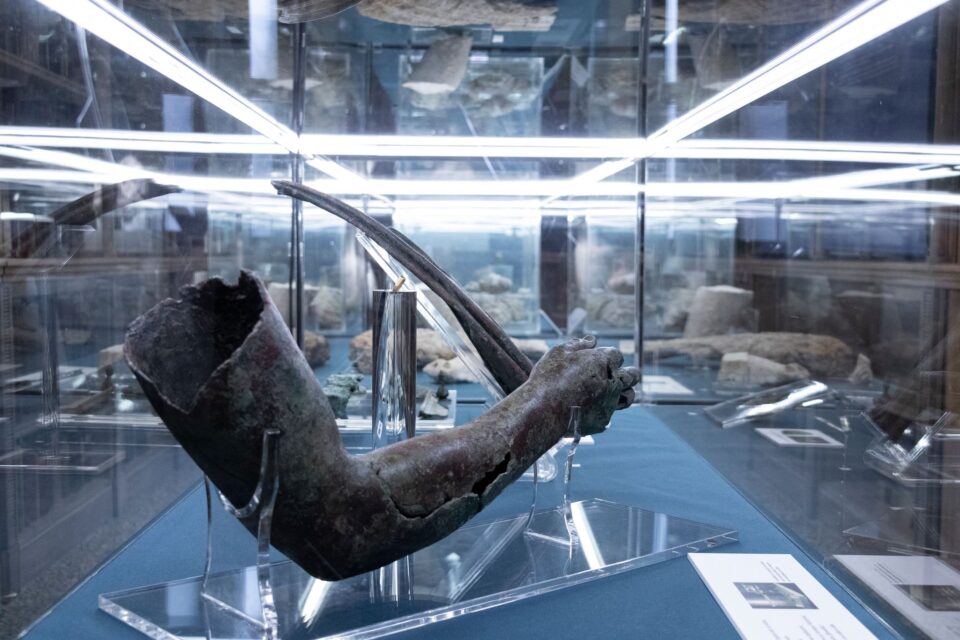
For the first time, more than 80 objects from the Antikythera Shipwreck are exhibited at the Aikaterini Laskaridis Foundation in Athens, in the most complete temporary exhibition to date.
The famous shipwreck of Antikythera, with its famous Mechanism, and its rich cargo, was discovered almost 124 years ago. Today it remains a unique “monument” of cultural heritage hidden on the seabed. Its discovery contributed to the beginning of underwater archaeology in Greece.
The Antikythera Mechanism, widely believed to be the world’s first computer, was among wreckage retrieved from a shipwreck off the coast of the Greek island Antikythera on May 17, 1901.
A year later, it was identified by Greek archaeologist Valerios Stais as containing a gear. Since then, the Mechanism has had a lasting impact on scientists and thinkers across the world.
The exhibition presents the results of modern research, from 2012 until today, and provides information about the ship, its equipment, cargo and occupants.

Bronze rings used to manage sails, lead rings that released the five anchors carried by the ship, as well as handkerchiefs from the ship’s hull are some of the objects that give information about the ship’s rigging.
The exhibition also includes spears, amphorae, lustrous metal objects, glassware, jewelry and a rich collection of ceramics that reveal the ship’s cargo and the route it followed, with stops at all the important ports of the time such as Kos, and Rhodes.
Head of Hercules among the exhibits of the Antikythera Shipwreck

Among the findings, oversized parts of marble and bronze statues hold a special place. One outstanding piece is the marble head of Hercules crowned with vines, which seems to belong to the headless statue of Hercules of the Farnese type. The headless statue, that resides in the National Archaeological Museum, was raised in 1901 by Symian sponge divers.
Parts of human bones are also presented in the exhibition, giving information about the shipwrecked individuals, while objects such as pipe parts, pillars and olive fruit kernels testify to the way of life during the journey.

The exhibition “The Antikythera Shipwreck: 124 years of Underwater Archaeological Research” is presented in sections on the ground floor of the Historical Library of the Aikaterini Laskaridis Foundation, where parts of the ship and its rigging are exhibited in the first room.
The lobby of the main hall features exhibits focusing on life aboard the vessel, while the main hall showcases artifacts from the ship’s cargo.
Related: Massive Marble Head, Human Teeth Discovered at Greece’s Antikythera Shipwreck
